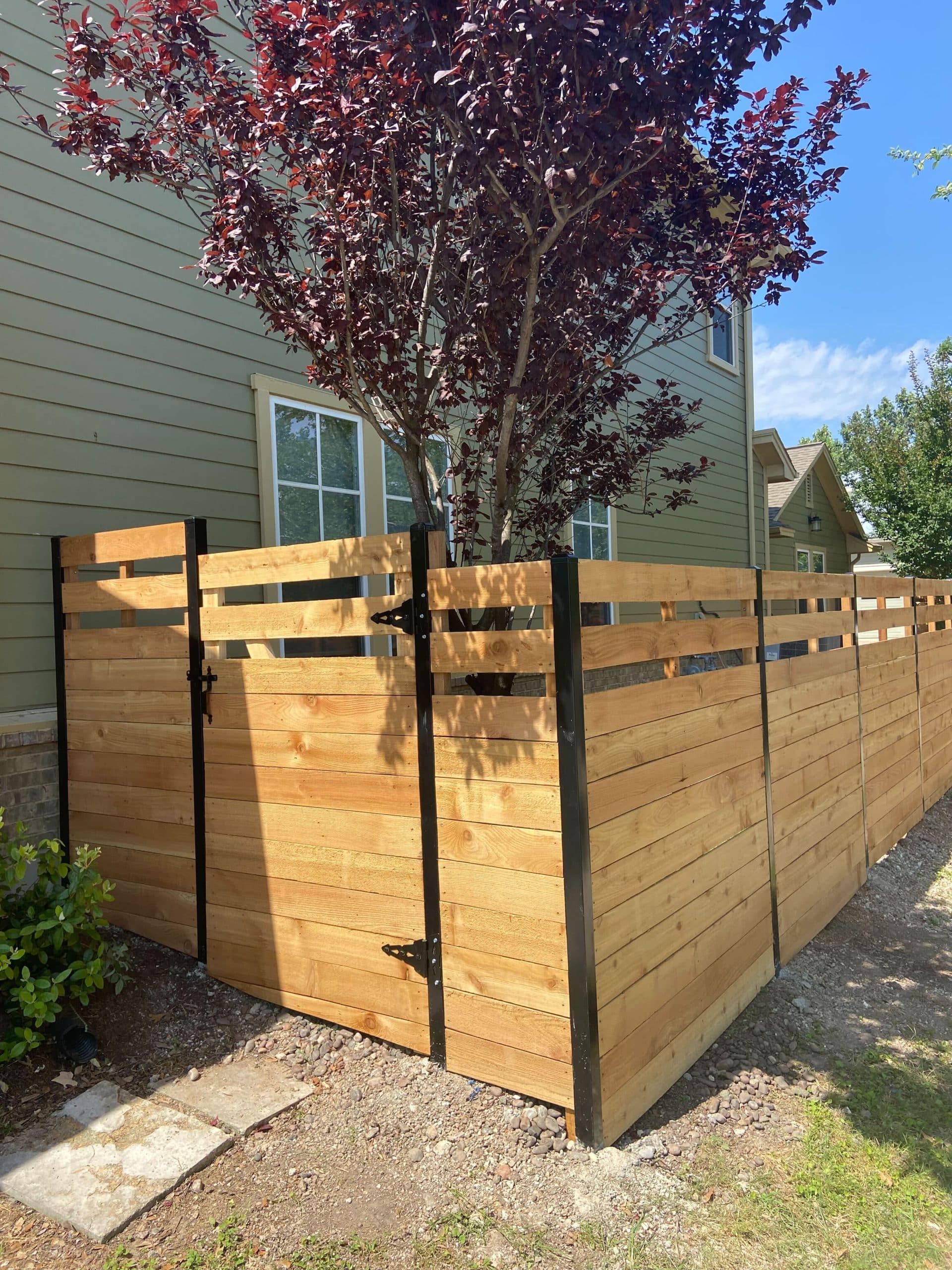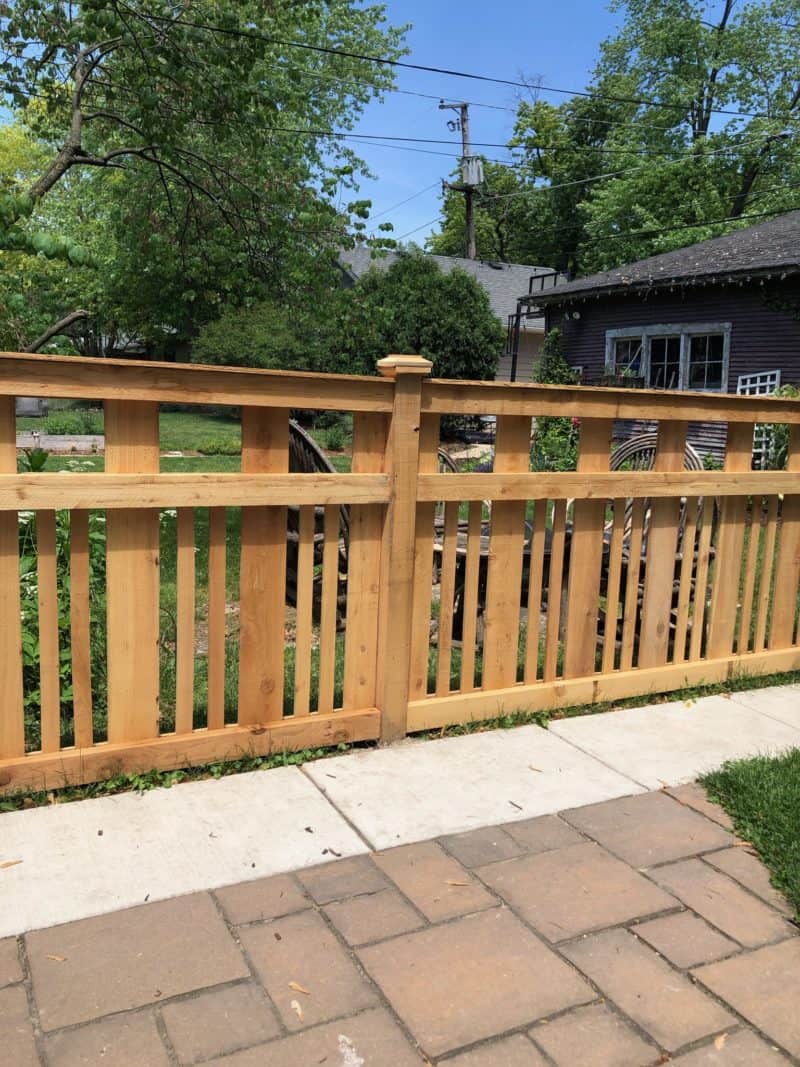All Categories
Featured
Whether it's solid winds, hefty rainfall, or severe warmth, weather can create considerable damage to your fence, leading to costly repair services or also a full substitute. Below are some practical tips to safeguard your fencing from weather-related damages.
Plastic Fencing: Plastic is immune and extremely sturdy to wetness, decaying, and bending. It likewise needs little upkeep and can endure harsh weather condition conditions without fading or splitting. Metal Fence: Wrought iron or aluminum fencings are resilient and solid versus wind and rainfall. They are vulnerable to corrosion over time if not properly protected. Applying a rust-resistant coating can assist preserve their appearance and stability. Composite Fence: Made from a mix of wood fibers and plastic, composite fences integrate the most effective top qualities of both materials. They're immune to bug, rot, and decay damages while providing the appearance of all-natural wood. By choosing the best product, you can make sure that your fencing is much better outfitted to withstand the components.
Wetness Security: Sealers produce a water-proof barrier, avoiding rainfall from permeating into the timber and creating rot or mold. UV Security: Discolorations and sealants block UV rays, which can dry and stain the timber. Preserve Appearance: Consistently using a protective coating will certainly preserve the fencing's all-natural charm and protect against discoloration or fading. To make sure long-lasting protection, reapply sealer or tarnish every one to two years, depending upon your climate and fence wear.
![]()
![]()
In addition, cleansing your fencing can help eliminate dust, mold, and particles that can trigger long-term damage. For wood fences, carefully pressure clean the surface to remove gunk, while plastic fences can be cleaned up with a mild cleaning agent option.
Conclusion. Your fence is a beneficial financial investment that provides security, privacy, and visual interest your residential property. By taking aggressive actions to protect it from weather-related damage, you can ensure its long life and keep its functionality. Whether you're choosing the appropriate materials, using safety finishes, or strengthening blog posts, these easy approaches can assist secure your fence from the components, conserving you cash and expanding the life expectancy of your fencing for years to come. Normal evaluations and maintenance are crucial to catching issues early, so be certain to remain on top of your fencing's care throughout the periods.
- Choose Weather-Resistant Materials. Among the initial steps in safeguarding your fencing from weather-related damages is selecting the best material. Some materials are normally more immune to the elements, reducing the need for consistent repair work. For example:
Plastic Fencing: Plastic is immune and extremely sturdy to wetness, decaying, and bending. It likewise needs little upkeep and can endure harsh weather condition conditions without fading or splitting. Metal Fence: Wrought iron or aluminum fencings are resilient and solid versus wind and rainfall. They are vulnerable to corrosion over time if not properly protected. Applying a rust-resistant coating can assist preserve their appearance and stability. Composite Fence: Made from a mix of wood fibers and plastic, composite fences integrate the most effective top qualities of both materials. They're immune to bug, rot, and decay damages while providing the appearance of all-natural wood. By choosing the best product, you can make sure that your fencing is much better outfitted to withstand the components.
- Secure Wood Fences with Stains and sealants. Wood fences are particularly at risk to dampness, UV rays, and extreme temperature levels. To secure your wood fence from these issues, applying a premium wood sealer or discolor is essential.
Wetness Security: Sealers produce a water-proof barrier, avoiding rainfall from permeating into the timber and creating rot or mold. UV Security: Discolorations and sealants block UV rays, which can dry and stain the timber. Preserve Appearance: Consistently using a protective coating will certainly preserve the fencing's all-natural charm and protect against discoloration or fading. To make sure long-lasting protection, reapply sealer or tarnish every one to two years, depending upon your climate and fence wear.

- Strengthen the Fence Posts. To prevent this, take into consideration reinforcing your fencing articles by mounting concrete footings or making use of more powerful materials for post anchors. If you live in a location with heavy winds or seasonal frost, this included stability will assist safeguard your fencing from damages.
- Trim Surrounding Plants. Tree branches and creeping plants growing near or over your fence can cause significant damage in thundercloud. Solid winds or hefty snow can create branches to damage, falling onto your fencing and breaking panels or damaging messages. Consistently cut any type of overhanging branches or sneaking vines to stop them from creating issues. Not only will this protect your fencing, yet it will certainly also boost the overall appearance of your yard.
- Usage Windbreaks. Wind is a significant variable in weather-related fence damage. A windbreak acts as a barrier that reduces the direct impact of wind on the fence, preventing damage from high winds and gusts.

- Address Drainage Issues. Poor drainage is a major contributor to fence damage, specifically for wooden fencings. Water that builds up around the base of fence blog posts can cause them to rot over time.
- Routine Evaluations and Maintenance. Regular maintenance is critical for shielding your fence from climate damage. Evaluate your fencing regularly, especially after severe weather condition occasions, to determine any kind of indicators of damage. Search for loose boards, leaning posts, or corrosion on metal components. Catching tiny problems early can stop them from becoming bigger, much more pricey fixings.
In addition, cleansing your fencing can help eliminate dust, mold, and particles that can trigger long-term damage. For wood fences, carefully pressure clean the surface to remove gunk, while plastic fences can be cleaned up with a mild cleaning agent option.
- Apply a Rust-Resistant Finishing to Steel Fencings. Metal fencings, specifically those made of iron or steel, are vulnerable to rust when exposed to wetness and moisture. To safeguard your metal fencing from corrosion, apply a rust-resistant covering or paint.
Conclusion. Your fence is a beneficial financial investment that provides security, privacy, and visual interest your residential property. By taking aggressive actions to protect it from weather-related damage, you can ensure its long life and keep its functionality. Whether you're choosing the appropriate materials, using safety finishes, or strengthening blog posts, these easy approaches can assist secure your fence from the components, conserving you cash and expanding the life expectancy of your fencing for years to come. Normal evaluations and maintenance are crucial to catching issues early, so be certain to remain on top of your fencing's care throughout the periods.
Latest Posts
Picking the Right Roofing Color: Influence On Power Performance
Published May 25, 25
1 min read
Explore Your Financial Partner at WyHy – Member-Focused Services for Your Goals
Published May 24, 25
1 min read
Uncover Premier Vehicle Maintenance Care offered by Montclare Auto Repair – Drive with Confidence
Published May 22, 25
1 min read
More
Latest Posts
Picking the Right Roofing Color: Influence On Power Performance
Published May 25, 25
1 min read
Explore Your Financial Partner at WyHy – Member-Focused Services for Your Goals
Published May 24, 25
1 min read
Uncover Premier Vehicle Maintenance Care offered by Montclare Auto Repair – Drive with Confidence
Published May 22, 25
1 min read